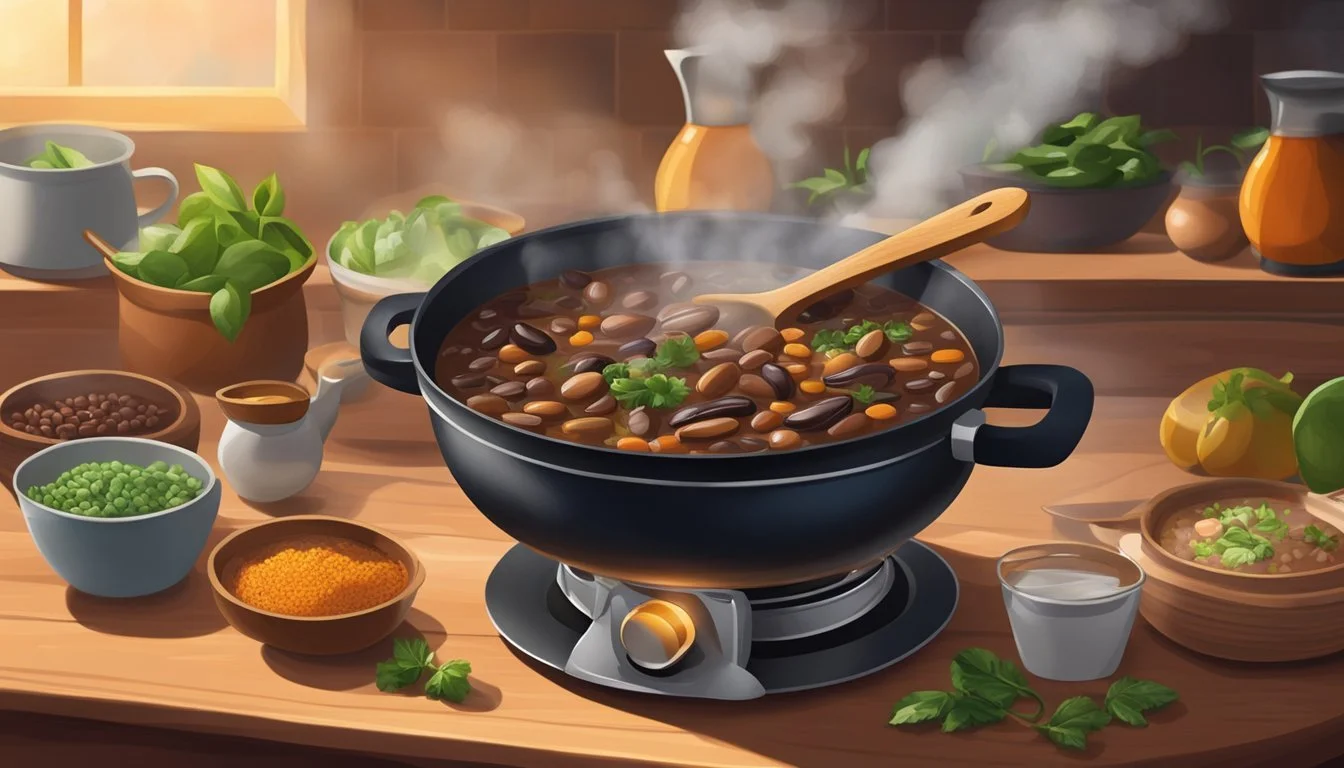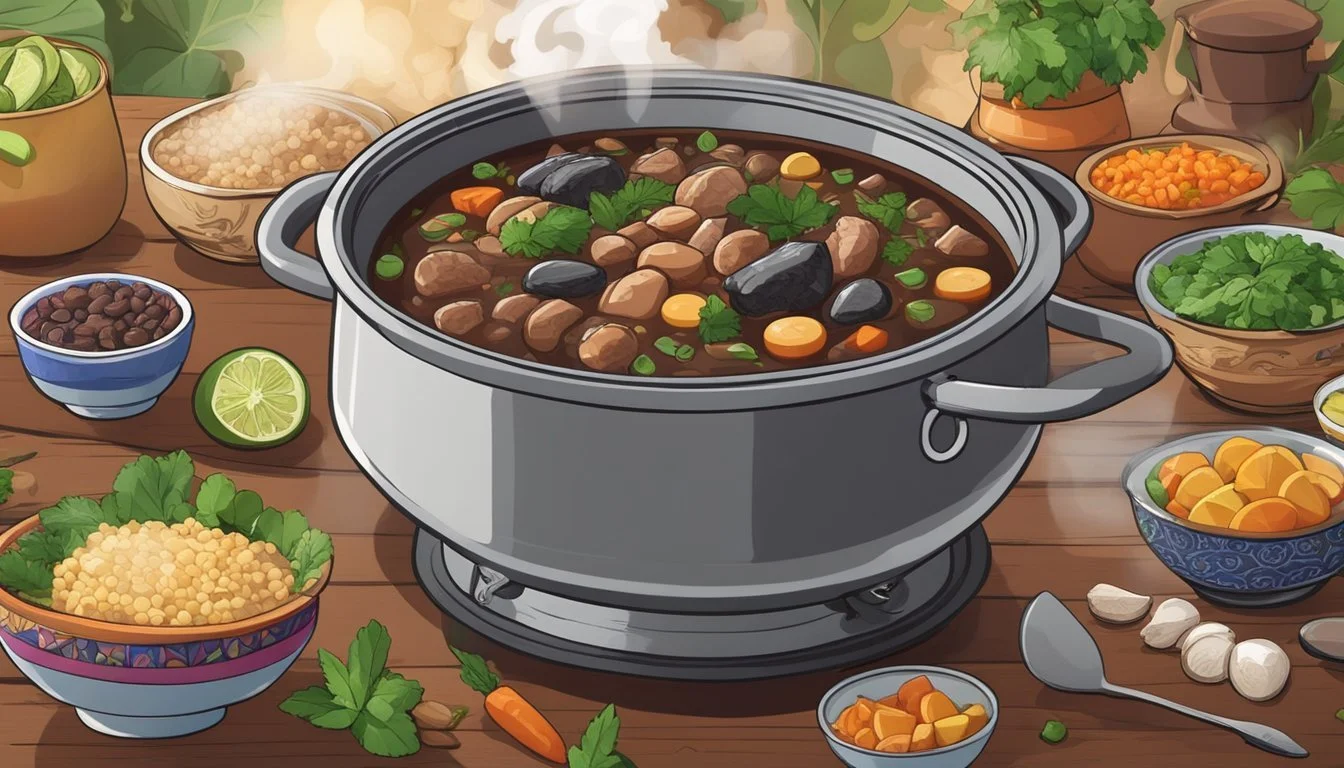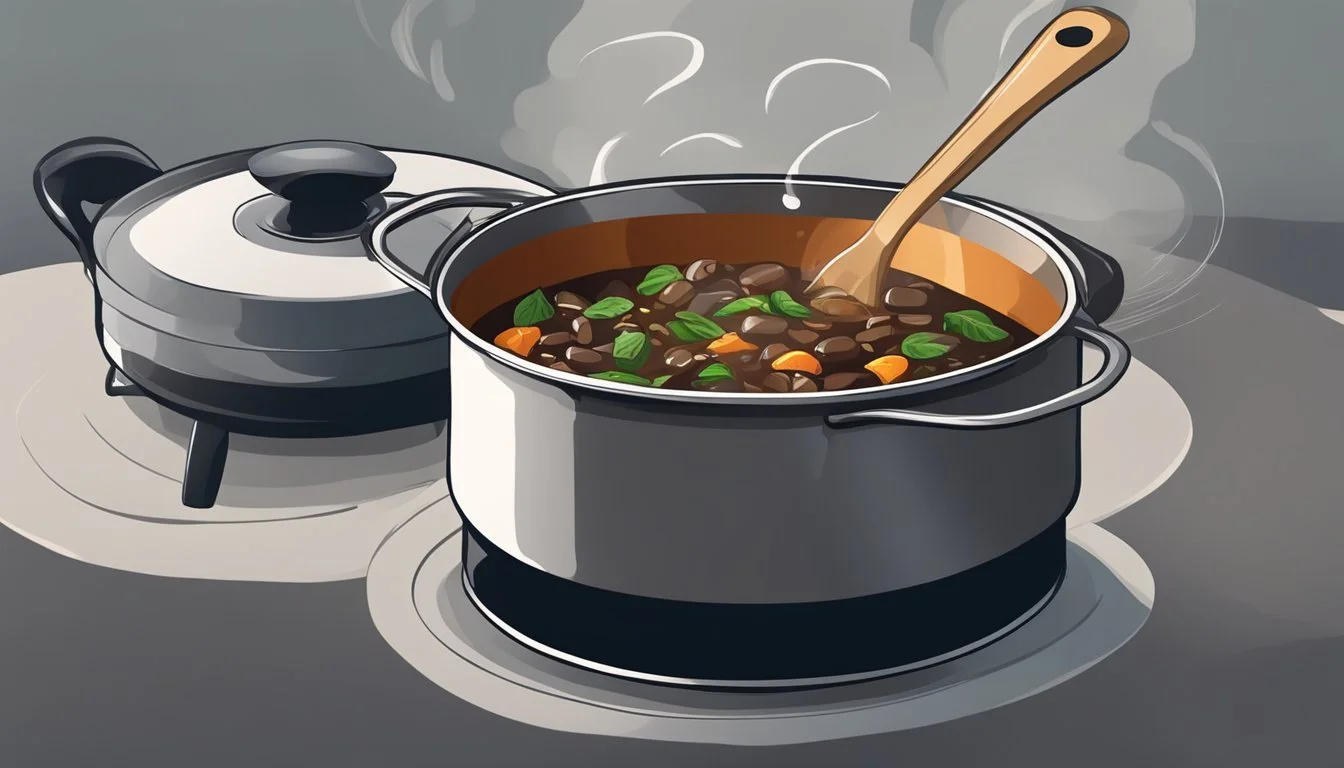Best Way to Reheat Feijoada
Tips for Preserving Its Authentic Taste
Feijoada, the soul-warming Brazilian stew, is a blend of black beans and assorted meats that embodies the concept of comfort food. As it's often cooked in large quantities, leftovers are common. However, reheating feijoada requires a careful approach to preserve its rich and hearty flavor. The key is in the method; as the stew includes a variety of ingredients that may react differently when reheated, one must be thoughtful to maintain the delicate balance of flavors and textures that feijoada is known for.
To ensure the feijoada retains its original charm upon reheating, one must consider the cooking medium, temperature, and timing. Consistency is a crucial aspect, as the stew should remain thick and creamy without being overly dry or watery. With the right technique, it's possible to enjoy a reheated bowl of feijoada that rivals the taste it had when it was freshly made. It's not only about getting the temperature right but also about preserving the integrity of the dish's varied components — from succulent meats to the perfectly tender beans.
Understanding Feijoada
Feijoada, the national dish of Brazil, is a hearty stew known for its rich flavor and varied meat ingredients. This section uncovers its historical roots, identifies the key ingredients, and emphasizes the role of flavor and texture in its preparation.
Historical Background of Feijoada
The origins of feijoada trace back to Brazil's history with Portuguese colonization and African influences. It is a dish that evolved from European stews (What wine goes well with stews?), adapted by African slaves using local ingredients and available meats, including leftovers from the Portuguese landlords' meals. Over time, feijoada transformed into a culinary symbol of Brazil, incorporating indigenous practices and elements, thus enriching its complex history and standing as a representation of Brazilian cultural fusion.
Key Ingredients in Feijoada
To create an authentic feijoada, specific ingredients are essential:
Beans: Traditionally, dry black beans are used and are central to the dish.
Meats: A variety of meats enhance the stew's flavor, from pork shoulder and pork ribs (What wine goes well with pork ribs?) to sausages, including chorizo and kielbasa. Smoked pork, ham hock, and carne seca (dried beef) are also often featured.
Seasonings and Vegetables: Bay leaves, onion, and garlic are used for foundation flavors, along with olive oil for sautéing.
Combining these ingredients results in a savory and comforting food experience, emblematic of Brazilian cuisine.
The Importance of Flavor and Texture
The hallmark of a well-prepared feijoada is its deep, smoky flavor and thick, creamy texture. Achieving this requires slow cooking to allow the beans to become tender and the meat to reach the point where it falls off the bone. The process melds the flavors of the meats, beans, and seasonings, creating a rich and satisfying stew. The savory complexity of feijoada makes it not just a dish but a culinary journey through the heart of Brazil's gastronomic heritage.
Preparation Before Reheating
Proper storage and preparation of Feijoada are crucial steps to ensure it maintains its rich flavor and texture when reheated. The following tips aim at preserving the quality of this Brazilian black bean stew.
Storing Feijoada for Reheating
Feijoada should be stored correctly to safeguard its flavors and facilitate easy reheating. Once the Feijoada is cooked, it needs to cool down to room temperature before any storage occurs. Here’s how to store Feijoada:
Refrigerator Storage:
Transfer the Feijoada into airtight containers.
Store in the refrigerator if it will be consumed within 3-4 days.
For longer storage, portion the Feijoada into freezer-safe bags or containers.
Label with the prep time, cook time, and total time for future reference.
Feijoada can be stored in the freezer for up to 3 months.
By adhering to these storage guidelines, the Feijoada's quality is preserved, making it easier to restore its original taste and texture during reheating.
Pre-Reheating Tips
Before reheating, one should take certain steps to ensure that the Feijoada's consistency remains intact:
Thawing:
If the Feijoada has been frozen, it must first be thawed in the refrigerator overnight to ensure even reheating.
Ingredients Check:
Inspect the Feijoada to confirm all components are present.
If the stew appears too thick after storage, one can add a little bit of water or broth to adjust consistency during reheating.
The Feijoada’s reheating process should employ a gentle heat to reinvigorate the stew without compromising its hearty Brazilian essence. Dutch ovens are particularly suited for reheating as they retain heat well and distribute it evenly, making them the ideal cookware for restoring the Feijoada's warmth and richness.
Reheating Feijoada
Proper reheating techniques are essential to preserve the savory flavors of Feijoada. This Brazilian black bean stew with pork and smoked sausages requires careful warming to maintain its richness.
Reheating on the Stove
To reheat Feijoada on the stove, one should use a large pot, adding a little bit of water to prevent drying. They should gently heat the stew on a low setting, stirring occasionally to ensure even warming. If the Feijoada appears too thick, adding water in small increments can help restore its creamy texture.
Reheating in the Oven
For oven reheating, preheat the oven to a moderate temperature, around 350°F (175°C). Place the Feijoada in a Dutch oven or another oven-safe pot, and cover it to retain moisture. Heat it until it is thoroughly warmed, which typically takes about 10-15 minutes. Monitor to avoid drying out the stew.
Using a Slow Cooker or Microwave
A slow cooker can be used to reheat Feijoada by setting it to the low heat and allowing adequate time for the stew to become warm. This method helps retain the stew’s moisture and flavor. In contrast, a microwave offers a quicker alternative but requires careful attention. It's best to reheat in short intervals, stirring in between to ensure even distribution of heat.
Maintaining Feijoada's Richness
While reheating, it's imperative to not overcook the meats like pork ribs to prevent them from becoming tough. Adding a bit of oil can help restore the glossy texture. If needed, they can adjust the seasoning after reheating since flavors can change during storage. Heating the Feijoada just until it's hot ensures the flavor remains as close to the original as possible.
Serving Suggestions
When reheating and serving Brazilian feijoada, pairing it with the right accompaniments is crucial to recreate an authentic and harmonious dining experience. The traditional Brazilian side dishes enhance the flavors and textures of this rich stew.
Traditional Brazilian Accompaniments
Brazilian feijoada is traditionally served with white rice, to soak up the flavorful sauce, and orange slices, which offer a refreshing contrast. Collard greens, expertly sliced and sautéed, provide a green, leafy balance to the stew's hearty richness. A sprinkle of farofa, a toasted cassava flour mixture, adds a delightful crunch.
Side Dishes to Complement Feijoada
Outside traditional Brazilian sides, one might consider other options to complement Feijoada. Fried plantains introduce a sweet note that counters the savory depths of the black beans and meat. For some added spice and texture, offer a colorful salad with a zesty lime dressing on the side. These choices are designed to delight the diner with a well-rounded representation of flavors and textures, ensuring a memorable Portuguese dining experience.
Tips for Leftovers and Making Ahead
When it comes to preserving the authentic flavors of Feijoada, Brazilian black bean stew, proper storage techniques and knowing how to substitute ingredients are crucial. Following these guidelines ensures every reheated serving is as satisfying as the first.
Storing Leftovers Properly
To maintain the rich and hearty flavor of Feijoada leftovers, they should be refrigerated within two hours of cooking. Leftovers can be kept in the refrigerator for up to three days in airtight containers. For longer storage, Feijoada can be frozen where it maintains its quality for up to three months. To freeze, let the stew cool completely and then divide into portion-sized containers. It's advisable to leave some space at the top of each container to allow for expansion.
Feijoada Variants and Substitutions
While traditional Feijoada is a meat-heavy dish, it is adaptable for different dietary preferences. For a vegetarian version, smoked tofu, carrots, and corn can be used as substitutes for the typical meats, providing an alternative that still carries the stew's robustness. For pescatarians, fish may be incorporated as a unique protein choice. When making ahead, consider if any substituted ingredients have different cooking times or storage needs that could impact the final dish.
Health Considerations and Dietary Information
When reheating feijoada, it's important to consider its nutritional profile, as it can impact dietary choices. This traditional Brazilian stew is typically rich in proteins and fibers due to its key ingredients: beans and meat.
Caloric and Nutritional Content
Feijoada is a hearty dish with a significant caloric presence due to its meat content, which often includes pork and beef. The beans contribute valuable fiber, protein, and minerals. Here is a simplified breakdown of the caloric and nutritional content per standard serving:
Calories: Approximately 300-500 kcal
Protein: 20-30 grams
Fiber: 10-15 grams
Fat: 15-25 grams, with a mix of saturated and unsaturated fats
Given the rich protein content from the meat and the fiber from the beans, feijoada can fit into a balanced diet. However, individuals with dietary restrictions, such as those requiring low-fat or low-sodium diets, should consider the levels of fat and salt in the dish. The dish can be adjusted to suit different health needs by moderating the types and amounts of meat included or by increasing the proportion of beans.
It's important for consumers to be mindful of portion sizes and to consider balancing a meal of feijoada with other foods lower in fat and calories to maintain a well-rounded diet.
FAQs About Reheating Feijoada
Reheating Feijoada can impact its taste and texture. Here are the answers to the most common questions people have about warming up this traditional black bean stew to ensure it remains delicious.
Common Questions and Concerns
How should one reheat Feijoada to preserve its flavors?
To reheat Feijoada, transfer the desired portion to a pot and warm it on a stove over medium heat. Stir occasionally until it is evenly heated through.
Can Feijoada be reheated in a microwave?
Yes, leftovers can be microwaved in a covered microwave-safe dish. Heat on medium power in 30-second increments, stirring between each session to help distribute the heat evenly.
Is it safe to reheat Feijoada multiple times?
It is generally best to only reheat the amount of Feijoada that will be consumed to avoid the risk of bacteria growth from multiple reheats. It's advisable to portion the leftovers before freezing or refrigerating.
What is the best way to store leftover Feijoada?
Leftover Feijoada should be cooled to room temperature within two hours of cooking and can then be stored in an airtight container in the refrigerator for up to three days or in the freezer for up to three months.
How does one thaw frozen Feijoada?
Feijoada stored in the freezer should be thawed in the refrigerator overnight or using the defrost setting on a microwave before reheating.
Why is it important to avoid overheating Feijoada when reheating?
Overheating can cause the beans to become mushy and the meats to dry out, which can significantly alter the stew's texture and taste.






